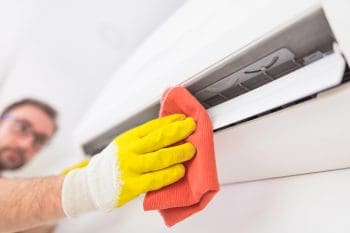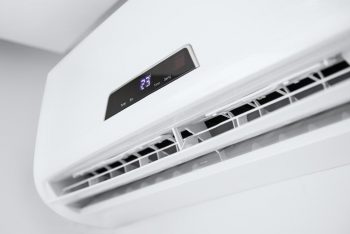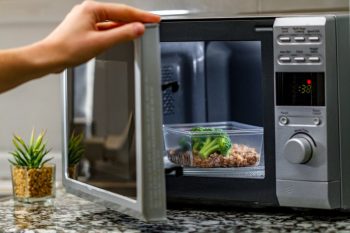
Hard water is a common problem in many households, leading to mineral buildup in pipes and appliances, including hot water heaters. One of these minerals is lime, also known as calcium carbonate. Lime buildup in hot water heaters can lead to numerous issues, including reduced efficiency, shortened lifespan, and even damage to the heating elements. In this comprehensive guide, we will walk you through the process of how to get lime out of a hot water heater, the signs of lime accumulation, the importance of lime removal, and preventative measures to avoid lime buildup in the future.
To get lime out of a hot water heater, first turn off the power or gas supply and let the water inside cool. Next, drain the water heater and pour a gallon of white vinegar into it through the pressure relief valve hole. Let the vinegar sit for 24 hours to dissolve the limescale, then drain the vinegar from the water heater. Finally, refill the water heater with fresh water and turn the power and water supply back on. This process should be done yearly to maintain the water heater’s efficiency.
Signs of Lime Accumulation in a Hot Water Heater
Lime accumulation in a hot water heater can manifest in various ways. Some of the most common signs include:
- White, chalky buildup around faucets and showers.
- Decreasing water pressure.
- Rumbling, popping, or hissing sounds from the heater.
- Water gets warm but never hot.
- Cloudy or rust-colored water.
- Low water pressure.
- Strange noises from tankless water heaters.
If you notice any of these signs, it’s essential to address the lime scale buildup in your water heater to prevent further damage and maintain its efficiency.
Importance of Removing Lime from a Hot Water Heater
Removing lime from a hot water heater is crucial for several reasons:
- Improved efficiency: Lime buildup reduces the heat transfer into the water tank, increasing energy bills.
- Extended lifespan: Regular maintenance, including lime removal, can extend the life of your water heater.
- Reduced noise: Lime buildup can cause popping or gurgling sounds as the water heater heats up. Removing the buildup can help reduce these noises.
- Improved heating speed: Lime buildup can cause circulation problems within the radiator, preventing hot water from moving around the system efficiently.
- Prevention of clogged pipes and taps: Lime scale buildup can lead to clogged pipes and taps, causing plumbing problems.
How Lime Builds Up in a Hot Water Heater
Lime buildup in a hot water heater occurs due to the presence of calcium in the water. As water flows through the earth, it encounters calcium-containing rocks such as limestone, dolomite, and gypsum. The adhesive nature of water allows it to collect bits of calcium from these rocks as it flows over them. When the water is heated in the hot water heater, the calcium is drawn out of the lime, leading to solid calcium deposits on the water heater’s elements. Over time, these deposits accumulate and form lime buildup, which can decrease the performance, energy efficiency, and lifespan of the water heater.
How to Remove Lime from a Hot Water Heater
Removing lime from a hot water heater involves a few simple steps:
- Turn off the power or gas supply to the water heater and allow the water inside to cool.
- Drain the water heater by attaching a hose to the drain valve and directing the water to a suitable location outside or into a bucket.
- Pour a gallon of white vinegar into the water heater through the pressure relief valve hole using a funnel. Vinegar is acidic and can help break down the calcium carbonate that limescale is made from.
- Let the vinegar sit in the water heater for 24 hours to dissolve the limescale.
- After 24 hours, drain the vinegar from the water heater.
- Refill the water heater with fresh water, turn the power and water supply back on.
Performing this maintenance routine yearly can help keep your water heater limescale-free and working efficiently.
Preventative Measures to Avoid Lime Buildup
There are several measures you can take to prevent lime buildup in a hot water heater:
- Regularly flush the water heater.
- Use vinegar to dissolve mineral buildup.
- Install a water softener.
- Use a scale prevention device.
- Monitor the temperature.
- Install a sediment filter.
By following these preventative measures, you can reduce the likelihood of lime buildup in your hot water heater, improving its performance, energy efficiency, and lifespan.
In conclusion, lime buildup in hot water heaters is a common problem but can be easily managed with regular maintenance and preventative measures. By following the steps outlined in this guide, you can ensure the longevity and efficiency of your hot water heater.
Frequently Asked Questions
How often should I flush my hot water heater to prevent lime buildup?
It is recommended to flush your hot water heater at least once a year. If your area has particularly hard water, you might need to do it more often.
Can I use any type of vinegar to dissolve the lime in my hot water heater?
While any vinegar can potentially do the job, white vinegar is recommended due to its high acidity.
What is a water softener and how does it help prevent lime buildup?
A water softener is a device that removes minerals like calcium and magnesium from your water. These are the minerals that cause lime buildup, so by removing them, you can prevent lime scale from forming.
What is a scale prevention device and how does it work?
A scale prevention device is a piece of equipment that alters the composition of hard water minerals, preventing them from sticking to surfaces and causing lime scale.
How does monitoring the temperature help avoid lime buildup?
Lime scale forms more quickly at high temperatures. By keeping your water heater’s temperature at a moderate level, you can slow down the buildup of lime.
What is a sediment filter and how does it help in preventing lime buildup?
A sediment filter is a device that removes solid particles from water before it enters your hot water heater. By removing these particles, it can help prevent the buildup of lime.












